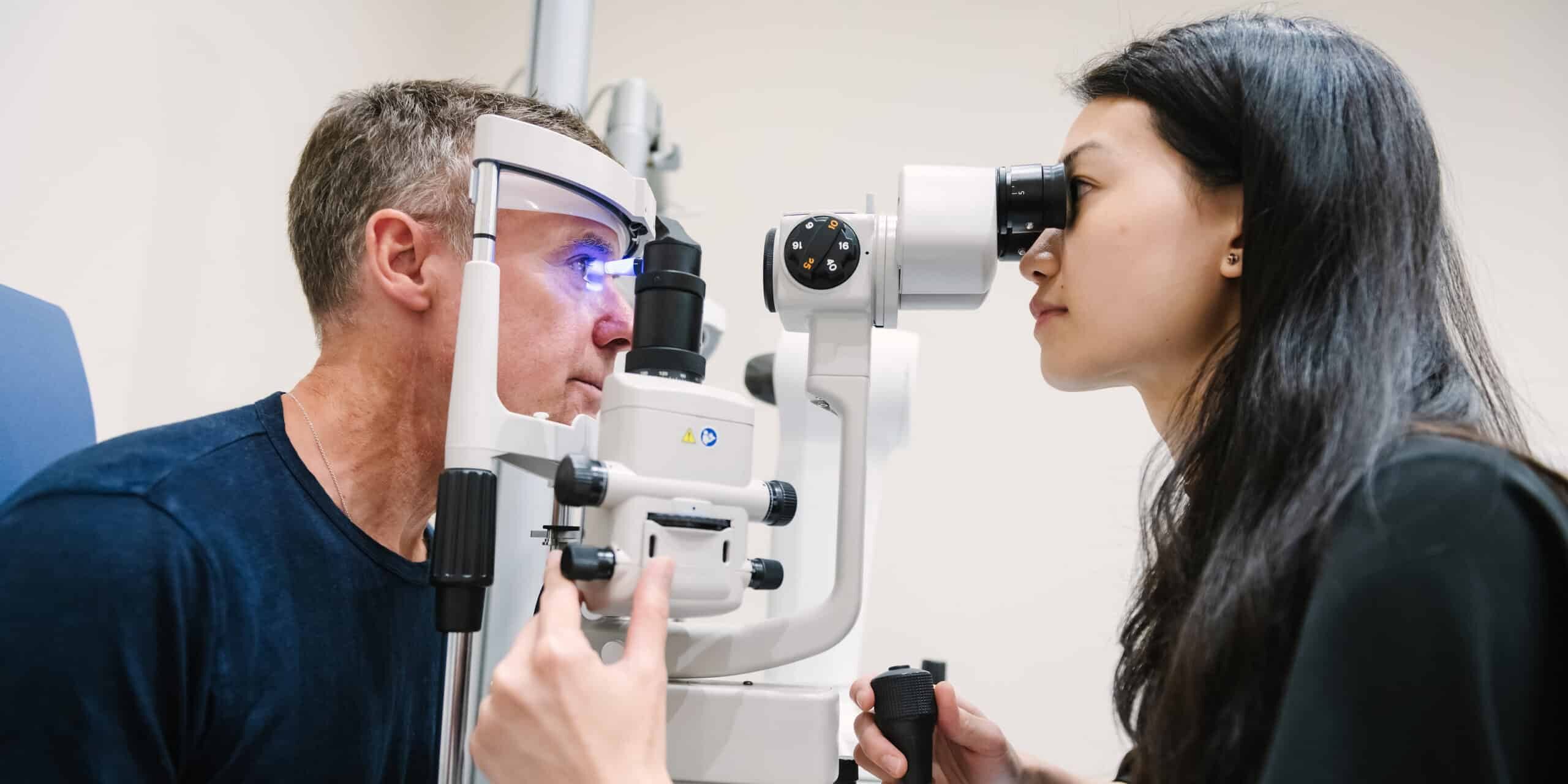It is important to have regular eye tests, which include eye pressure tests, so eye conditions such as glaucoma can be detected as early as possible and treatment can be started if necessary. Early intervention and treatment can be the catalyst which prevents vision from becoming severely damaged.
In early stages of glaucoma, symptoms are often absent. To mitigate the risk of glaucoma developing and progressing without your knowledge, you should have an eye test which includes eye pressure measurement and optic nerve assessment, especially if you are over the age of 40.
What Are the Causes of Glaucoma?
Some people are genetically more susceptible to glaucoma (progressive optic nerve damage) than others, and the condition can arise for a number of reasons.
Most cases of glaucoma are associated with a build-up of pressure in the eye which occurs when fluid (aqueous humour) is unable to drain properly. This pressure can then cause damage to the optic nerve which connects your eyes to your brain, and can result in vision loss if left untreated.
It is often unclear why high eye pressure develops in the eye, but early detection allows effective treatment to be provided before it becomes a problem. Some people with high eye pressure do not get glaucoma, and there is a type of glaucoma that happens in people with normal eye pressure (normal tension glaucoma). Anyhow, treatments that lower eye pressure help to slow the disease.
Some factors which can increase the risk of glaucoma include:
- Your age – you become more susceptible to the condition as you get older
- Your ethnicity – people of African, Caribbean, or Asian origin have a higher risk of developing glaucoma
- Your family history – you will be more likely to develop the condition if you have a close relative, such as a parent or sibling, with the condition
- Other medical conditions – short-sightedness, long-sightedness, diabetes and those taking topical or systemic steroids can contribute to the risk of developing glaucoma
Research has not found that anything can be done in your daily life to reduce the chance of developing glaucoma, however regular eye tests with eye pressure tests can detect signs of the condition up to 5 years before symptoms begin showing.
How is Eye Pressure Tested?
An eye pressure test, also known as tonometry, uses a special instrument called a tonometer to measure the pressure within your eye.
During an eye pressure test, your optometrist will put some eye drops in your eye which contain a small amount of numbing medicine (anaesthetic) and dye into the front of your eye. From here, they will then shine a light into your eye and gently touch the surface of it with a tonometer.
You may have previously had an eye pressure test using a puff of air, however, most optometrists now use a more accurate device which measures pressure by direct contact with the eye.


What Does an Eye Pressure Test Show?
Each person’s eye pressure test can show a different measurement, and there is no single correct pressure for everyone. In general, the range for normal pressure will range between 10 and 23 mmHg. MmHg means ‘millimetres of mercury’, which is a scale used to record eye pressure.
If you have eye pressure that is constantly higher than the range of normal (24mmHg or more), your optometrist may refer you to a hospital eye service glaucoma department for determination of a clinical management plan.
Can an Eye Test Detect High Blood Pressure?
Uncontrolled high blood pressure can show signs at the back of the eye such as burst blood vessels and gathering of fluid at the macula (the most sensitive part of the retina). It is not unusual for people to discover that they have high blood pressure after they have had an eye test and have been advised to get their blood pressure checked.
Your optometrist will observe the calibre of the blood vessels in the back of your eye during an eye test. Interestingly, blood pressure and eye pressure vary independently. High blood pressure is not usually a direct cause for high eye pressure.


What is the Eye Pressure Test with a Puff of Air?
Air-puff tonometry, or non-contact tonometry, is a traditional form of eye pressure measurement which uses a rapid air pulse to applanate, or flatten, the cornea. Although this is a non-contact method, there is some controversy regarding its accuracy; and Goldmann tonometry which we use has been shown to be the ideal method and gold standard which shows the best results.
Book your Eye Pressure Test at Taylor-West & Co
An eye pressure test will allow detection of the major modifiable risk factor for primary glaucoma, which is raised eye pressure. Whether it be the early signs of the condition which can be treated with early intervention or the full-scale disease which will need effective and immediate treatment, an eye pressure test as an adult is essential for assessment of your risk of developing glaucoma.
Protection of your vision is extremely important to the team at Taylor-West & Co, and we use the very latest state-of-the-art equipment to detect even the most minuscule of changes to your eyes and provide the very best care possible to protect your eyesight for as long as possible.





